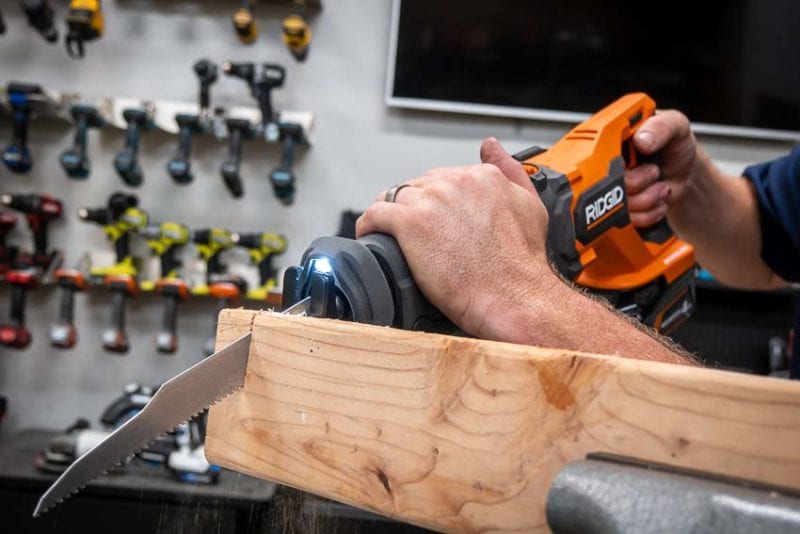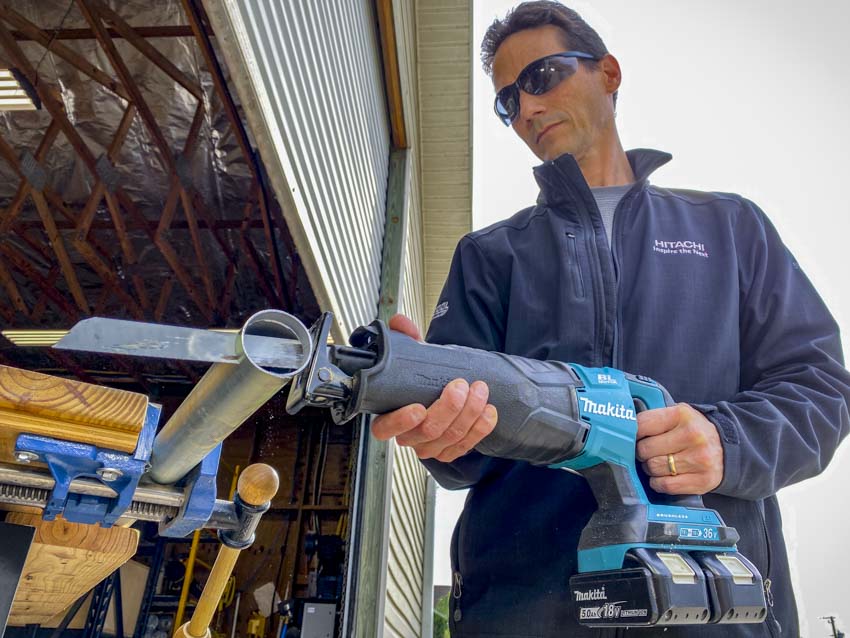There’s probably no more useful saw for remodelers, plumbers, and electricians than the reciprocating saw. It’s hard to imagine a jobsite without one. But that was the reality before the introduction of the Milwaukee Sawzall—the trademarked name that became synonymous with reciprocating saws—in 1951. I got our Pro team together to help you understand how to use a reciprocating saw.
Editor’s Note: Want even more? Check out Pro Tool Reviews’ top reciprocating saw recommendations of the year!
Table of Contents
- What is a Reciprocating Saw?
- What Do You Use a Reciprocating Saw For?
- Select the Right Blade
- How to Install a Blade on a Reciprocating Saw
- Know What You’re Cutting Before You Pull the Trigger!
- How to Vary Your Speed When Using a Reciprocating Saw
- Best Way to Use a Reciprocating Saw Shoe
- How to Use a Reciprocating Saw to Rock Your Demo Job
What is a Reciprocating Saw?
The reciprocating saw was originally designed as a motorized hacksaw. A flywheel mechanism inside pushes and pulls the blade to replace the same action you would normally use a hand saw for.
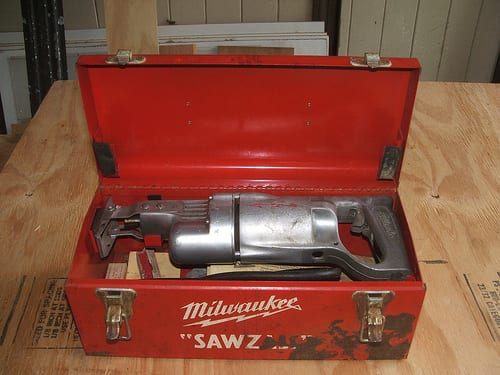
The big difference is that the long, slow strokes you use with a hand saw are short, fast ones with a reciprocating saw.
As the reciprocating saw evolved, it saw the introduction of orbital action. This shifted the blade from a straight back-and-forth motion to an elliptical one. It’s a more aggressive action that cuts faster in wood.
You can get a reciprocation saw in corded or cordless forms today and some of the cordless models cut as fast or faster than their corded counterparts.
There are also different forms. The traditional long two-hand models aren’t the only ones, though they are the strongest and fastest.
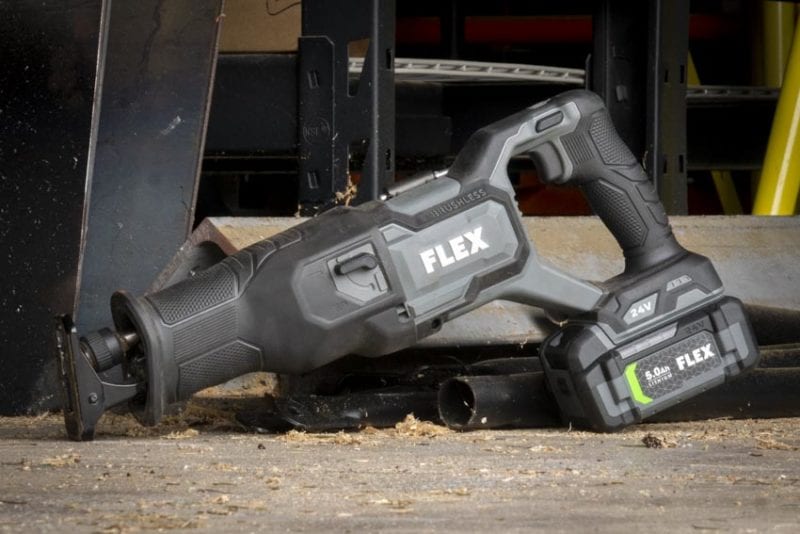
Compact and one-hand versions get into tighter areas and can be much lower weight for lighter-duty cutting.
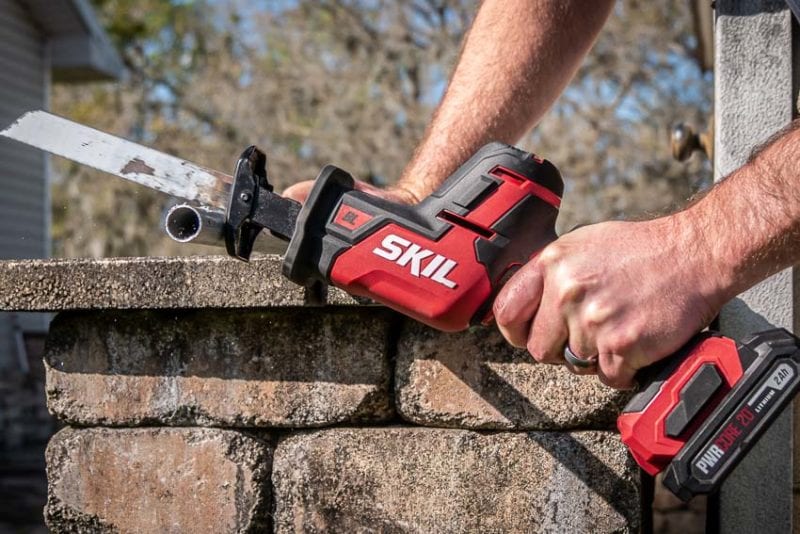
What Do You Use a Reciprocating Saw For?
In a word, you use a reciprocating saw for cutting. Duh, right? More specifically, you use it in place of a hand saw primarily for demolition cutting. A reciprocating saw’s aggressive cutting is best for tearing things apart rather than making precise, clean cuts.
That’s not to say you can’t use one for install cuts. Take a one-hand saw with a 3-inch thin metal blade and an electrician can make a pretty darn good cut while running conduit.
That’s typically the exception rather than the rule, though, and you normally use a reciprocating saw for rough cutting.
I use reciprocating saws to cut wood metal, plastics, and more. Some fire departments even use them with a carbide blade to cut car parts off to extract accident victims. With blades ranging from 3 to 12 inches, they can cut much deeper than other types of handheld saws.
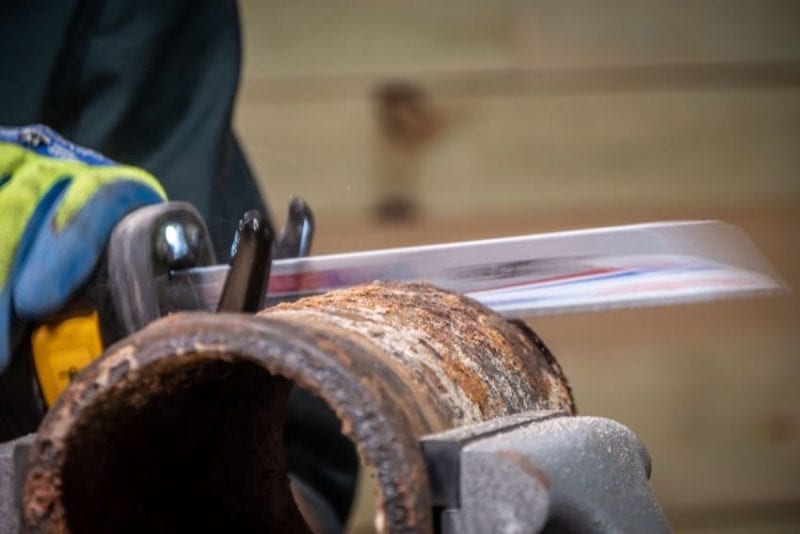
Common Materials to Cut
- Drywall
- Studs
- Clean wood
- Nail-embedded wood
- PVC pipe
- Conduit
- Cast iron pipe
- Stainless steel pipe
- Angle iron
- Roofing (plywood, shingles, flashing, etc)
- General demolition
Select the Right Blade
The reciprocating saw can be the right tool, but if you don’t have the right blade, it’s the wrong tool. Select the blade for the material you’ll be cutting. Most reciprocating saw blades say right on the package what it’s good for cutting: clean wood, wood with nails, thin metal, thick metal, etc.
In general, the fewer teeth per inch, the faster the cutting and the rougher the finish. Low TPI blades (6 – 9 TPI) are great for cutting wood, medium TPI (10 – 14 TPI) is good for PVC and thin/soft metal, and high TPI (14+ TPI) is good for thick/hard metals.
That’s just a general guide, though, and there are plenty of crossover scenarios. There are also specialty blades to consider.
Carbide blades are another consideration. They are much more expensive, but the carbide lasts much longer than bi-metal teeth. With premium blades, the cost of one carbide blade can easily replace 10 or more bi-metal ones, saving you money in the long run.
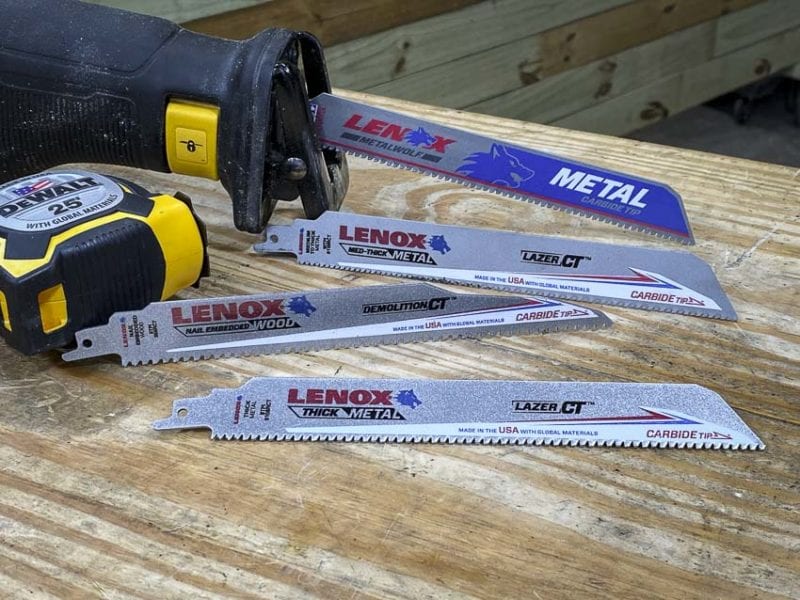
How to Install a Blade on a Reciprocating Saw
Nearly all of today’s reciprocating saws have a tool-free blade lock mechanism. Most require you to hold it open to insert a new blade. With the saw unplugged or the battery removed, open the blade clamp, insert the blade, and release the clamp.
There are a variety of mechanisms and some are better than others. Here are the two most common I see:
- Shaft-mounted twist lock: use your fingers to twist at the grip area on the shaft
- Lever release: a lever or slide on the side of the front housing that releases the blade clamp
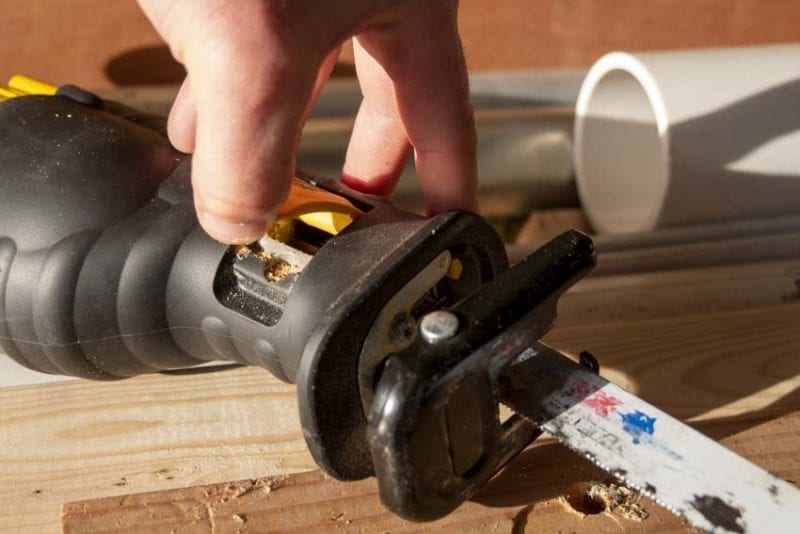
Always carefully give the blade a tug to be sure it’s truly locked in place. Use gloves if you’ve just finished cutting—blades get very hot when cutting wood or metal. Check out our best work gloves if you want some suggestions on what I find works best.
Pro Tip: You can install a reciprocating saw blade upside down to cut in an upward motion.
Know What You’re Cutting Before You Pull the Trigger!
Your attention will be on the intersection of the blade with the material once you start the cut, but the blade extends far beyond that. Be sure the blade won’t hit anything as it quickly moves back and forth from its furthest limit.
This is especially important when plunge-cutting into drywall or subfloor where you can’t see what’s behind the material. Be sure you don’t cut electrical wires or plumbing! While choosing the correct blade length can help, running an AC detector and/or wall scanner to show you what you can’t see might save you some major headaches.
How to Vary Your Speed When Using a Reciprocating Saw
With the speed of today’s reciprocating saws, you can go from 0 – 3100 SPM in a blink. That can send the blade bouncing all over the place. Some saws have a built-in soft start that eases into the cut and let the teeth bite in well. Even if yours doesn’t, feather the trigger so the blade can get a good start before ramping it all the way up to full speed.
Different materials have different cutting characteristics you’ll learn over time. in general, you can cut wood, plastic, and even soft metal at high speeds. Hard metals such as stainless steel and cast iron really benefit from slower stroke rates. By going with a slower speed, you can actually cut faster, experience less vibration, and extend your blade life.
Some saws have variable speed dials or settings you can use to set the maximum stroke rate. Milwaukee M18 Fuel Sawzall with One-Key gives you the option to select your material and blade in the One-Key app and dials in the best settings for the cut. Many saws only have one speed, forcing you to feather the trigger for your speed control.
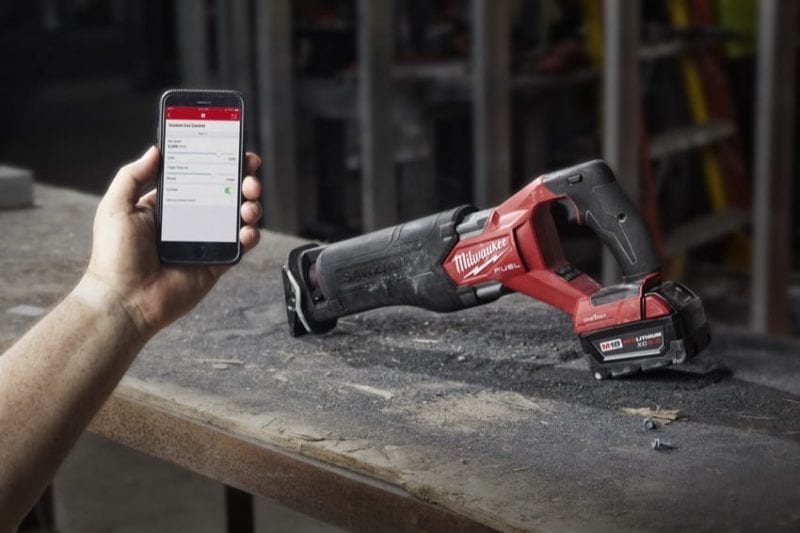
Particularly for tougher metal cuts, feather the trigger slower as you complete the cut. It’s common for the blade to bounce on the last bit of metal holding on as the rest of the metal begins to fall away.
Best Way to Use a Reciprocating Saw Shoe
The shoe is at the front of a reciprocating saw and it’s designed for you to press against the material you’re cutting. When you keep good contact with it, you experience significantly less vibration. Proper cutting from the shoe is better than any anti-vibration technology currently available. Better yet, use proper technique and get a saw with advanced anti-vibration for the best experience.
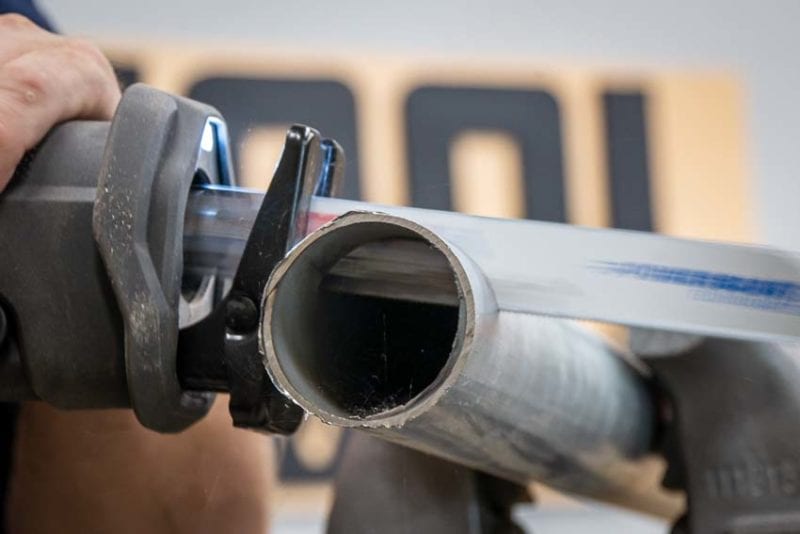
The most basic reciprocating saw shoe is fixed. As you cut, you need to move or pivot the entire saw to keep good contact.
Others have a pivot point, letting you keep the saw where it’s most comfortable in your hands as the shoe pivots to keep the best contact with the material. The advantage is most obvious when you’re cutting pipe and other round materials.
Another feature is an adjustable shoe. Often tool-free, this allows for an inch or two of movement forward and back so you can use fresh teeth on the blade. When you’re cutting smaller stock such as 1/2-inch conduit or plywood, it can be like getting a whole new blade for free.
Regardless of the type of shoe your saw has, two hands on the saw are better than one, even on a one-hand reciprocating saw. You end up with better control over every aspect of the cut.
How to Use a Reciprocating Saw with Orbital Mode
Some reciprocating saws have orbital action. When you engage it, the blade starts working in an elliptical motion instead of moving straight forward and back. This more aggressive action helps cut faster, but there are some caveats.
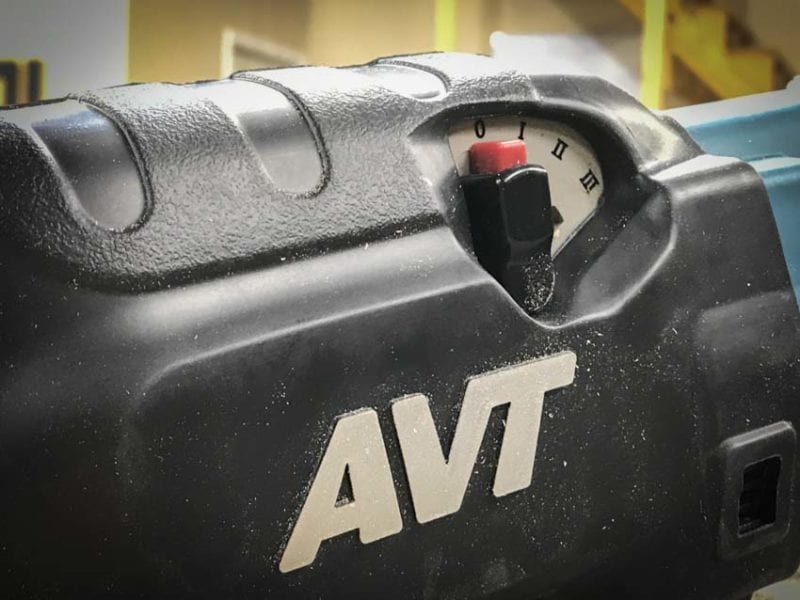
Two trade-offs to consider are that the orbital motion introduces more vibration to the cut and produces a rougher finish. With good technique on a demo job where the finish isn’t critical, it’s absolutely worth it to get the faster cutting orbital action offers.
Only use orbital mode for cutting wood and mixed demo that’s primarily wood. You can cut metal in orbital mode, but it’s a miserable experience.
How to Use a Reciprocating Saw to Rock Your Demo Job
If the blade cuts slowly through the material, making you feel like you can skip the gym this week, it can mean a couple of things. It might indicate that the blade is dull and ready for replacement. It also might simply mean that you’re not letting the saw do the heavy lifting.
In thicker or denser material, gently rock the saw while you cut. You’ll find it typically results in faster progress. Rocking the saw engages fewer of the teeth of the reciprocating saw blade. This helps the blade focus on a smaller section of the cut as you go. It also helps chip ejection—clearing the path for the next stroke.
